Looking for a fun and eco-friendly craft to enjoy with your kids at home? Dive into the world of cardboard weaving, a simple yet engaging activity that allows children to explore their creativity while using recycled materials. This guide offers step-by-step instructions on how to create beautiful woven art pieces inspired by renowned fiber artists such as Judith Scott, Sheila Hicks, and Magdalena Abakanowicz. Whether you’re looking for an educational art project or a mindful crafting experience, cardboard weaving is perfect for families seeking easy home art projects.
Let’s get started on this journey into fiber art, transforming everyday materials into extraordinary creations!
You may also be interested in:
Artist Inspo
Judith Scott
Judith Scott was a remarkable fiber artist who, despite being born with Down syndrome and becoming deaf, discovered her artistic abilities in her 40s. She began creating art at the Creative Growth Art Center, which is dedicated to artists with disabilities. Scott’s artwork stands out for its intricate sculptures, made by wrapping yarn and other fibers around everyday objects. Her unique approach turned these items into mysterious and fascinating artworks that challenge our thinking about art, disability, and creativity. Judith Scott’s work has been celebrated worldwide, making her a significant figure in the art world today.

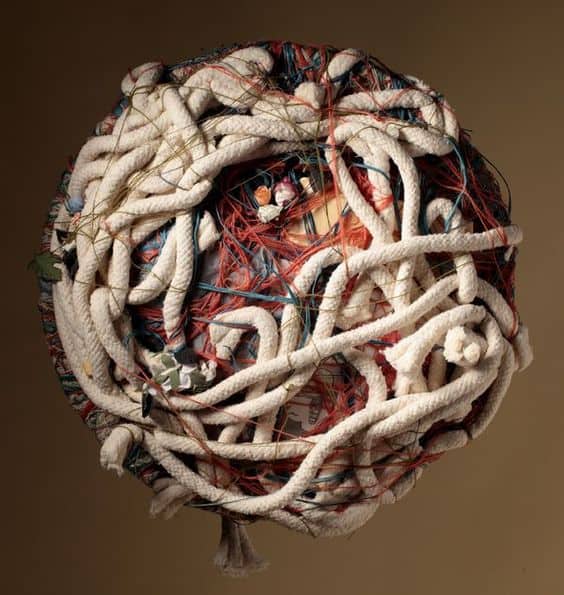
Sheila Hicks
Sheila Hicks is an influential American artist who has reshaped the world of fiber arts over her long career. Hicks has blurred the lines between traditional crafts and modern art by using textiles to create both small weavings and large-scale installations. Her education in painting and sculpture helped her see the potential in textiles, drawing inspiration from weaving traditions from around the globe. Known for her vibrant colors and innovative use of materials, Hicks’sHicks’s work invites us to think differently about the texture and form of fibers. Her artistic contributions have inspired many in both the art and design fields.

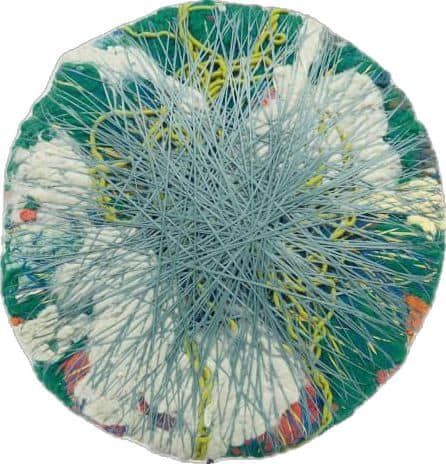
Magdalena Abakanowicz
Magdalena Abakanowicz was a Polish artist famous for her textile sculptures that delve into the human experience, touching on themes like identity, crowd behavior, and the impact of war. Growing up during World War II influenced her deeply, shaping her artworks into powerful statements on the human condition. Her most notable works, known as the “Abakans,” are large textile pieces that challenged traditional views of fiber art in the 1960s and 70s. These works, often resembling human forms or body parts, speak to people’s fragility and resilience. Abakanowicz’sAbakanowicz’s influential pieces have been displayed worldwide, securing her place as a pivotal figure in contemporary art.
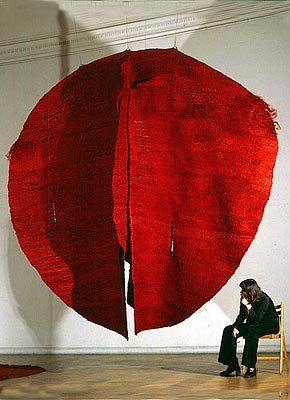
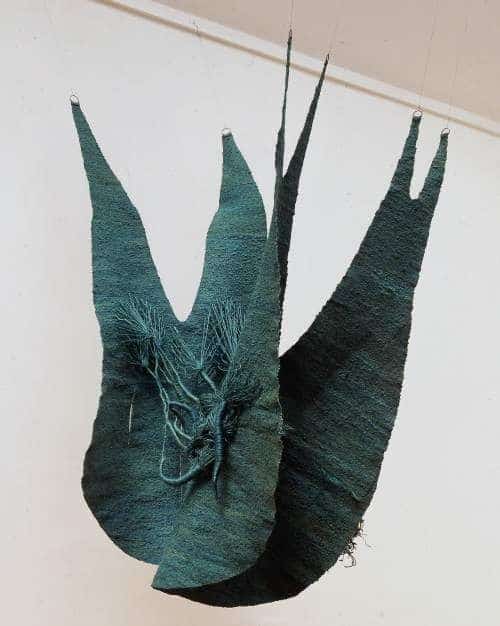
Materials:
- Cardboard
- Yarn in various colors
- Scissors
- Tape
- Large-eye blunt needles
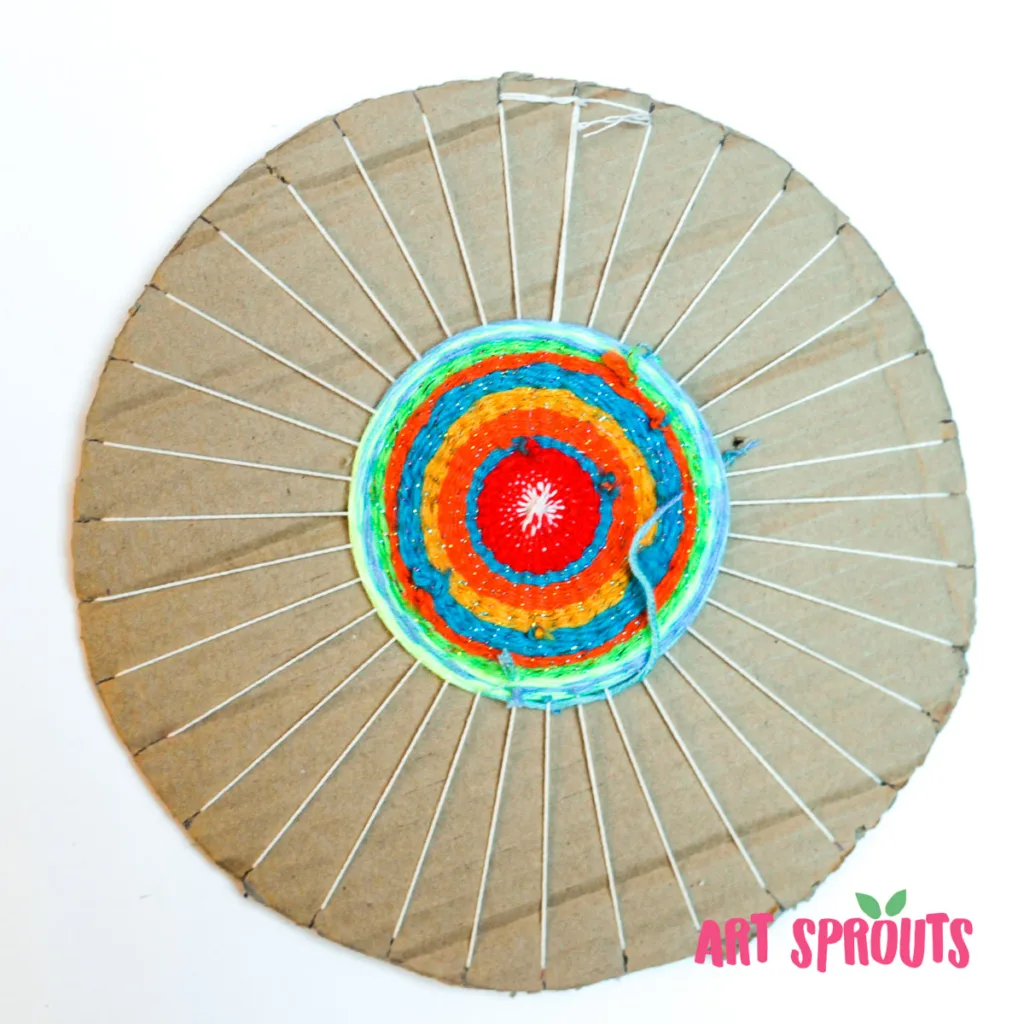
Step by Step Instructions to Creative Cardboard Weaving
Prepare the Cardboard Loom:
- Encourage children to cut their cardboard into circles. Have them make small slits around the edges, about 1 inch apart, to secure the yarn.
Set up the Loom:
- Guide students to secure the end of their yarn with tape on the back of the cardboard and stretch it to a slit on the opposite edge. Ask them to continue creating spokes until the circle is complete, ensuring even spacing for easier weaving.
Start Weaving:
- Instruct the kids to begin weaving at the center of their cardboard loom. They should weave their yarn over and under the spokes, alternating with each round for a patterned effect. To introduce new colors, show them how to tie a new piece of yarn to the end of the old one. They could also experiment with beads or other materials.
Add Finishing Touches:
- Once their weaving fills the circle, help students tie off the yarn on the back securely. Encourage them to personalize their woven piece by adding decorations or fringe with additional yarn.
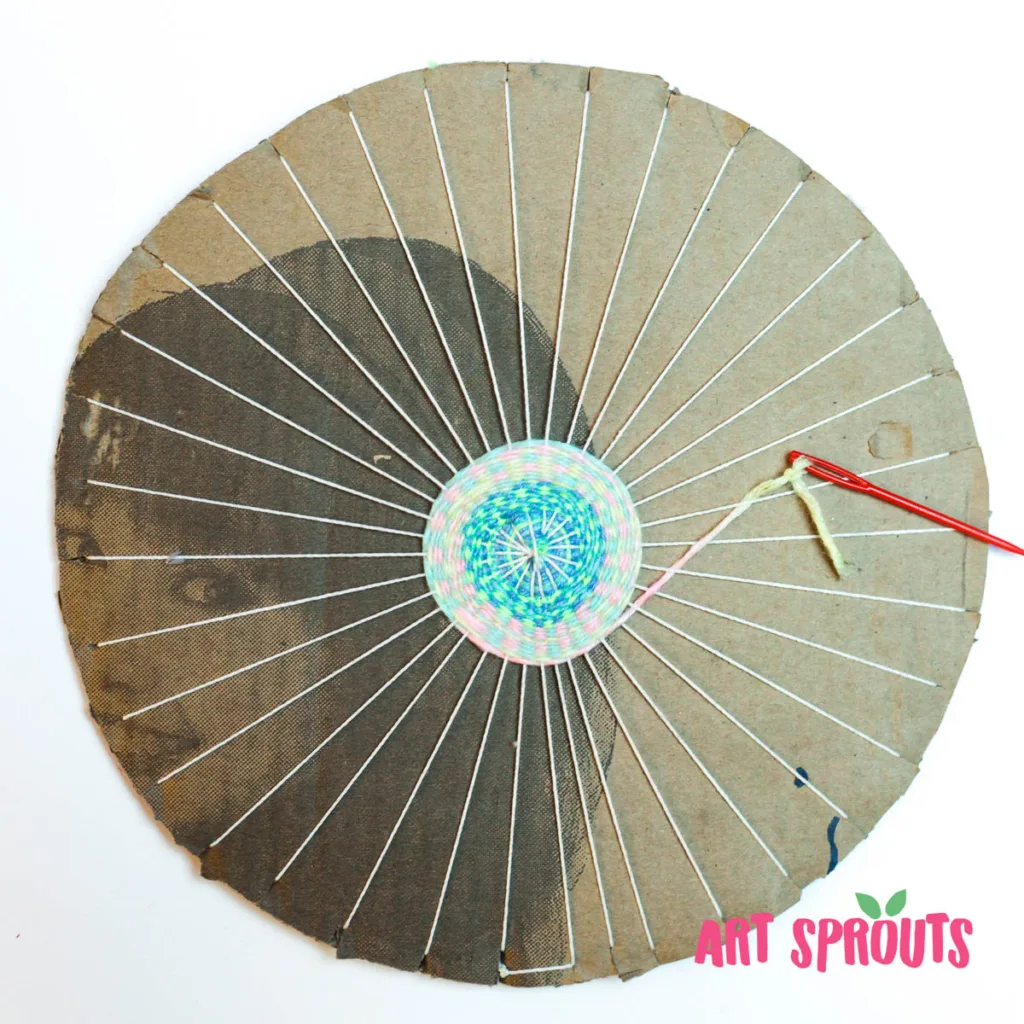
Extensions:
- Research a Fiber Artist: Choose a fiber artist to research. Prepare a short presentation about their life, works, and their impact on the art world.
- Create a Collaborative Piece: Work together to produce a large weaving piece. Combine multiple cardboard looms or work on a bigger loom collectively.
- Explore Cultural Weavings: Dive into weaving techniques from different cultures. Try to recreate traditional patterns, celebrating the diversity and history behind them.
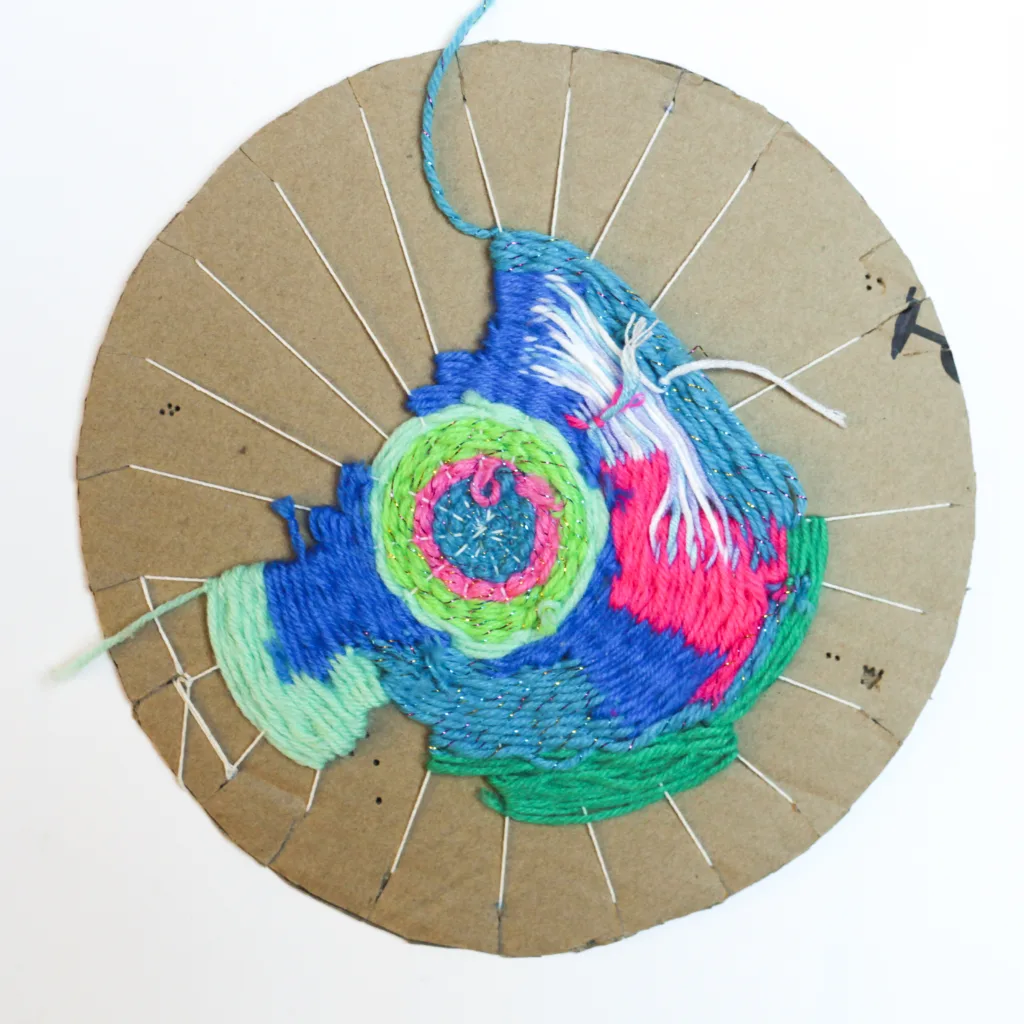
Tips and tricks:
- Start Small: For beginners, especially younger children, start with smaller cardboard circles. Smaller looms are less overwhelming and quicker to fill, offering a sense of accomplishment early on.
- Yarn Thickness Matters: Encourage experimentation with different thicknesses of yarn. Thicker yarn covers more space and is easier for small hands to manipulate, making the weaving process faster and more satisfying for beginners.
- Color Planning: Before starting, have students plan their color scheme. This can involve drawing a simple sketch with their chosen colors. It helps them visualize the end product and ensures they are happy with their color choices before beginning.
- Weaving Patterns: Once students are comfortable with the basic over-and-under weave, introduce them to simple patterns, such as alternating two rows of one color with two rows of another or creating shapes within their weaving.
- Incorporating Textures: Beyond beads, encourage adding other materials like ribbons, strips of fabric, or even feathers. This can add interesting textures and make each piece more unique.
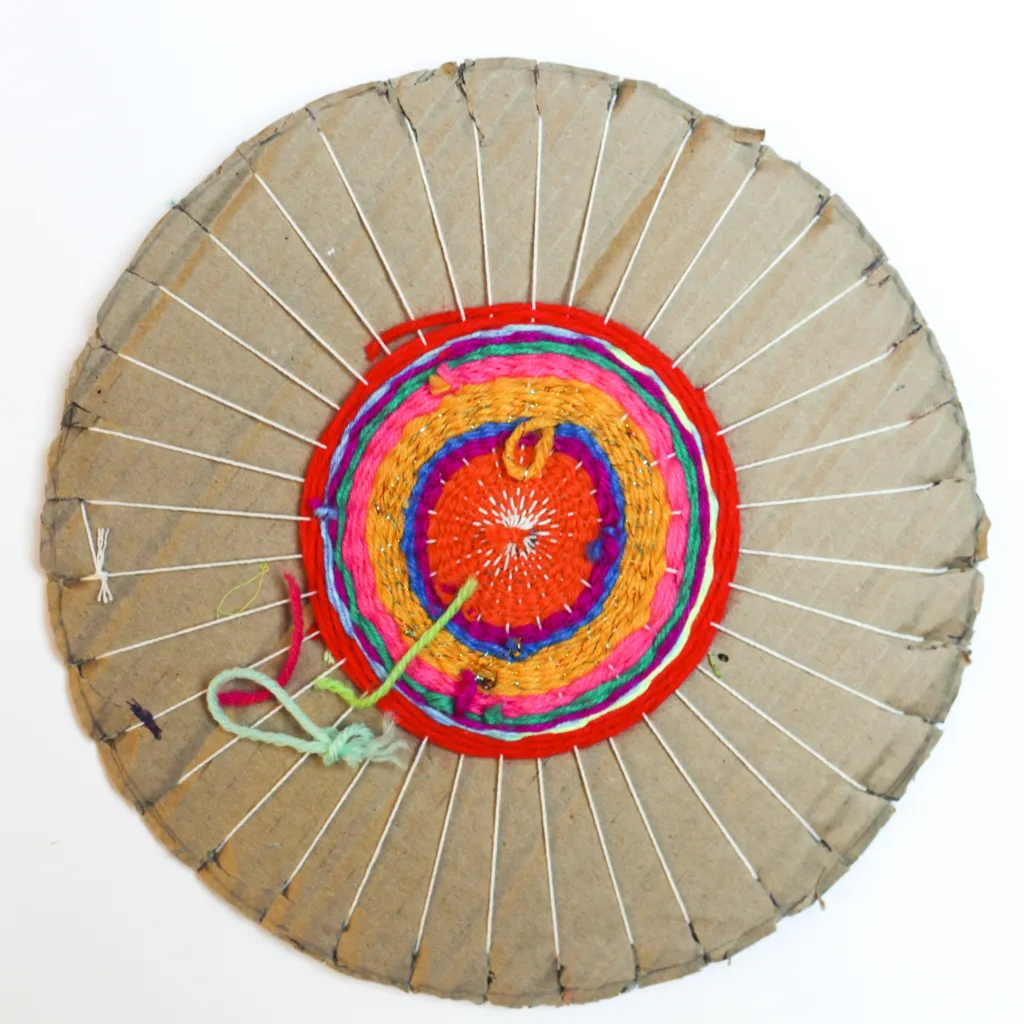
- Patience and Persistence: Remind students that weaving is not only about the final product but also the process. Encourage them to take their time, enjoy the act of weaving, and see any mistakes as part of the learning process.
- Group Weaving: For a large group project, consider creating a communal weaving piece where each student contributes a portion. This can be a great way to foster teamwork and show how individual efforts contribute to a larger whole.
- Displaying Finished Work: Discuss options for displaying their finished pieces, such as hanging them on the wall, attaching them to a stick for a more rustic look, or incorporating them into a larger art project.
- Consider using weaving as a relaxing activity during cool-down times. Weaving’sWeaving’s gentle, repetitive actions can help students feel peaceful, just like art therapy does. Keep unfinished weavings to work on during these quiet times.
If you’ve tried this eco-friendly craft at home, we’d love to hear from you. Share your thoughts, experiences, and even your own creative twists in the comments below.

